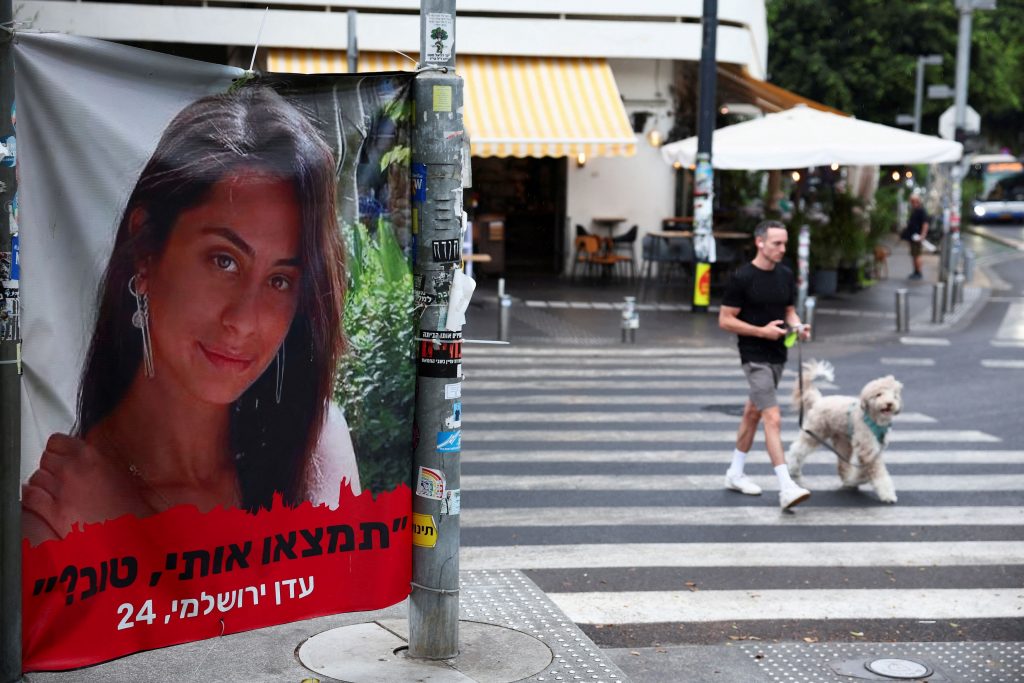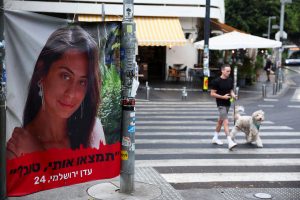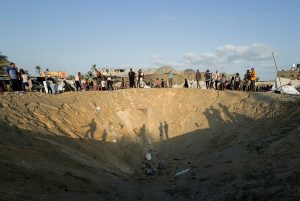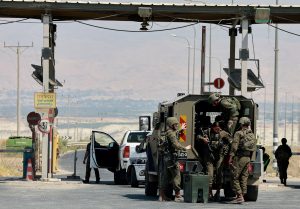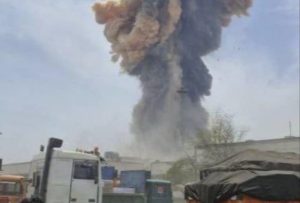KFARDEBIAN, Lebanon—Fireworks crackled over this mountain resort about 50 miles north of the border with Israel, their reflections glittering in a swimming pool as young people ordered bottle service and puffed on cigars. A nearby cliff-side nightclub filled up with affluent Lebanese dancing to deep house music and drinking cocktails at tables that cost $100 to book.
Sunday’s heavy exchange of fire between Israel and Hezbollah did little that might interrupt the vibe. The militant group fired hundreds of rockets into Israel, and around 100 Israeli warplanes hit dozens of suspected rocket launch sites across southern Lebanon. But much of the rest of Lebanon was untouched, and a feared escalatory spiral appears to have been avoided.
The two sides have now settled back into the skirmishing that has prevailed for months—fiery exchanges of drone attacks, airstrikes, and rocket and artillery fire that have made swaths of Lebanon’s southern border area unlivable, killing people and cattle and sending nearly 100,000 residents fleeing for shelter while sparing residents to the north.
“In a dystopian country, you have to hold on to happiness,” said Luna Karame, 26 years old, who works in fashion in Paris and was visiting her home country for the summer.
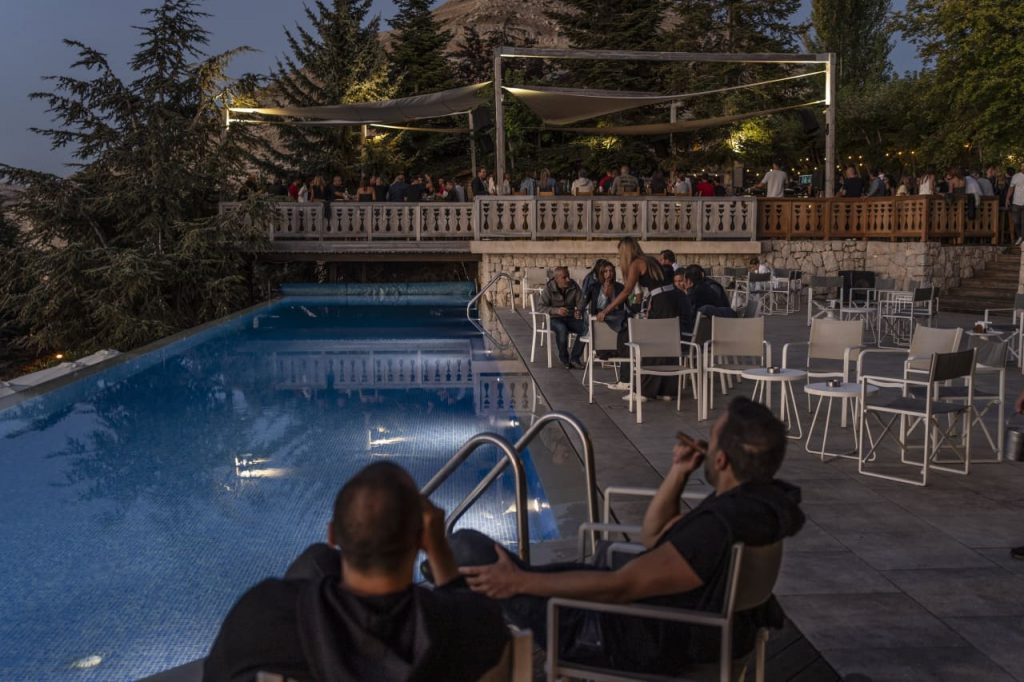
Affluent Lebanese at a club in the mountain resort of Kfardebian earlier this month. | Photograph by Manu Brabo for WSJ
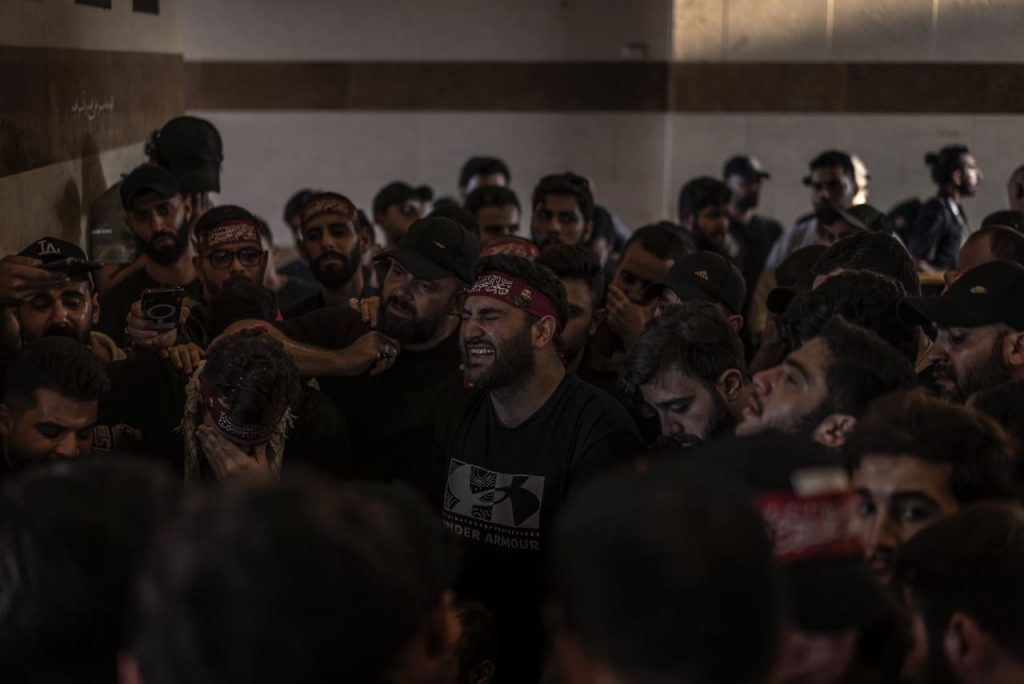
Relatives and friends crying by the grave of a Hezbollah militant in Beirut’s Dahiyeh district earlier this month. | Photograph by Manu Brabo for WSJ
Lebanon is living two realities. While areas of the south are experiencing the heaviest fighting in nearly two decades, with more than 500 people killed—mostly Hezbollah fighters, according to the group and Lebanon’s health ministry—other Lebanese are doing their best to live life as normal. That includes escaping the heat and tension to party in a parallel world in the mountains.
“It’s always been like this,” said Carla Salem, 60, a fashion-shop owner from Beirut who was visiting the family’s chalet in the mountain town of Faraya for the summer. “It is resilience pushed to the extreme.”
The scene belies a Middle East on edge as the fighting in Gaza has spilled over into violence on several fronts . Residents of the Lebanese capital are moving on with life even as they worry about a wider war. In the south, where Hezbollah has traded fire with Israeli forces since October, people say the war has already come.
“It’s like the war has split the population in two, and it is only the people in the south who are paying the price,” said Hafez Moustafa, a 47-year-old farmer whose family fled the village of Beit Lif, less than 2 miles from the border, on Oct. 9. They now live in a shelter in the southern city of Tyre. Moustafa said his house has been destroyed and his cows have been killed or have fled.
The fighting began shortly after the Hamas-led attacks on southern Israel that left 1,200 dead, according to Israeli authorities, and triggered an Israeli assault on the Gaza Strip. Hezbollah started firing at Israel the following day, leading to a cycle of strikes and counterstrikes that has depopulated a swath of northern Israel as well, where more than 60,000 residents have been evacuated.
Israel says it has drawn up plans for an incursion into Lebanon and will take action unless a diplomatic solution to the fighting can be found. Hezbollah says it won’t stop until the fighting ends in Gaza. Diplomats from the U.S. and around the region are scrambling to secure a cease-fire in Gaza that might also de-escalate regional tensions.
Lebanon has long been a nation divided, its five million people split among a plethora of faiths and sects swerving from one violent conflict and political crisis to the next stretching back to a 15-year civil war in the 1970s and 1980s. For years, the country has been controlled by a feeble caretaker government that struggles to provide even basic services such as electricity, much less unify or defend the population.
“The main problem remains the fact that there’s no strong central state,” said Christian Taoutel, director of the history department at Saint Joseph University of Beirut.
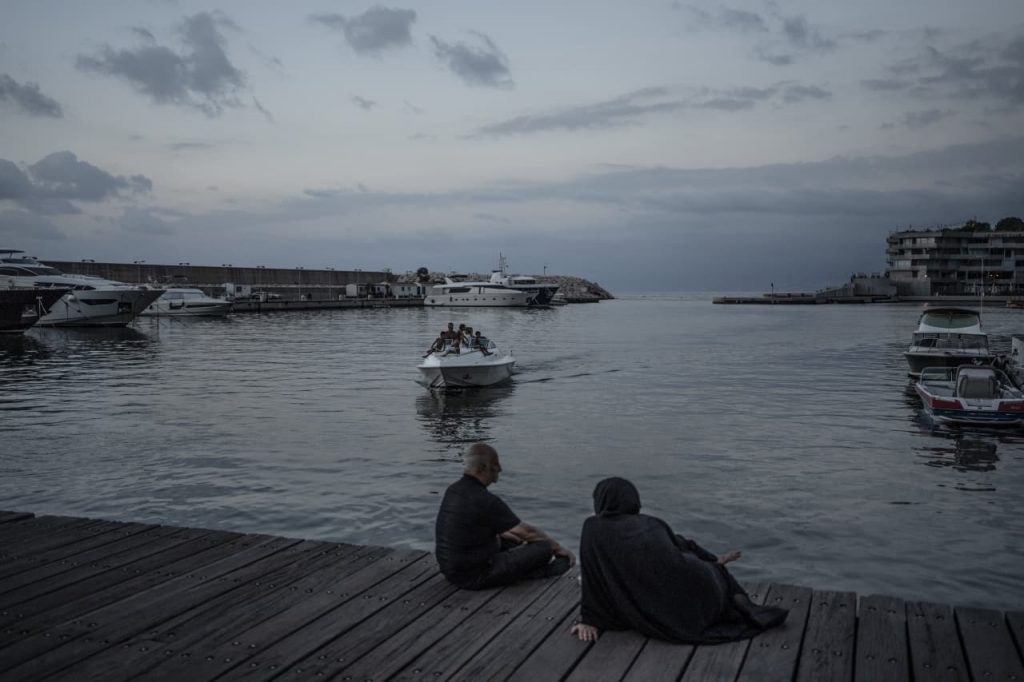
A Lebanese couple on a dock at a marina in Beirut last week. | Photograph by Manu Brabo for WSJ
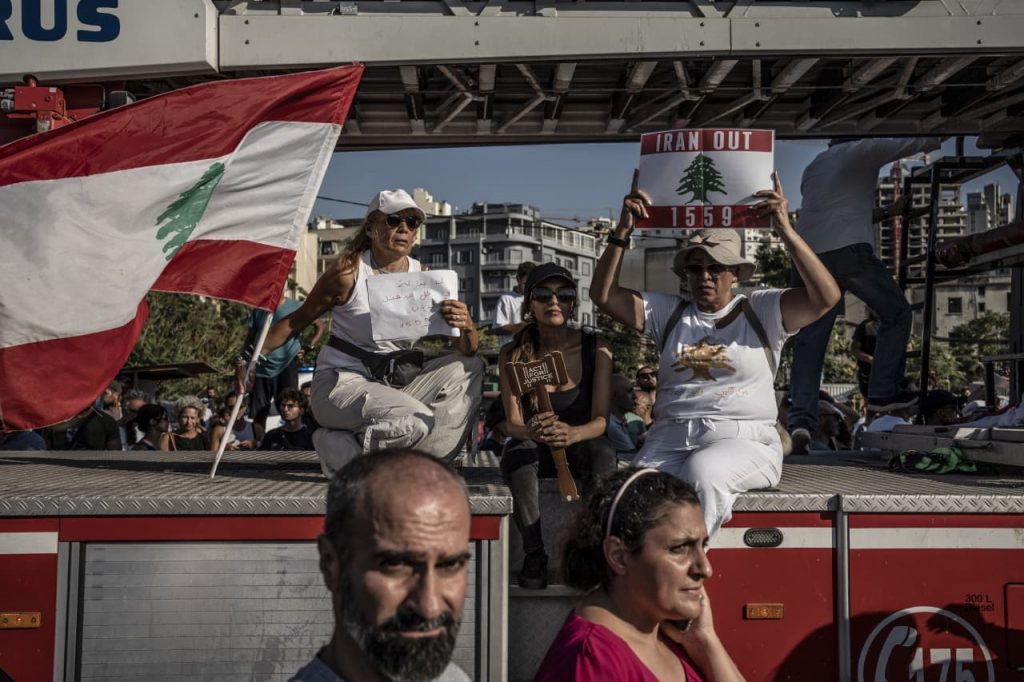
Demonstrators hold Lebanese flags, one with a slogan protesting against Iranian influence, while marching toward the port of Beirut during a commemoration of a deadly explosion there four years ago. | Photograph by Manu Brabo for WSJ
Since Hezbollah originated in the 1980s to resist Israeli occupation of Lebanon, it has grown into the country’s best-armed force, surpassing the national military, largely because of support from Iran. As a legal party, it is also a dominant political force and provides social services to its constituents, exposing the absence of the central government. It controls crucial infrastructure, including to a large extent the economically important port in Beirut.
“In the Shia regions,” Taoutel said, “the majority think that the only state that can protect them is the Hezbollah state. For them, the Lebanese state is a failed state.”
In other areas, Hezbollah is seen as a private militia that decided to enter a war that Lebanon didn’t want, he said.
“Some people think the south is a country of its own,” Nadim Mantoura, 34, an entrepreneur planning to open a hi-fi listening bar in Beirut, said over pizza at a fair in Kfardebian. At the fair, families ate fast food as nannies watched children jump around in a bouncy castle. Teenage girls touched up their makeup, and boys smoked cigarettes. A woman carried a cockapoo in her arms.
Partying offers some release, said Latiza Bombé, the stage name of a 27-year-old drag queen in Beirut who organizes events called Heshik Beshik with Middle Eastern pop music and belly dancing.
Bombé, who asked to be identified by his moniker because he was recently attacked in Beirut and had to temporarily leave the country, was born into a conservative Shia family in the south.
“People dance as if it’s the last party on earth,” Bombé said. “Maybe it’s their own way of resisting, of letting go of something traumatic that has happened.”
Hospitality is a big part of the crisis-plagued Lebanese economy. In the past half decade Lebanon has been rocked by a popular uprising, the Covid-19 pandemic, an explosion at the port that laid waste to large parts of economically active Beirut, and a banking crisis that devalued the currency by 98% and wiped out people’s savings .
Now, amid the fear of war, international airlines have suspended flights, foreign embassies have told their citizens to leave the country and hotels stand empty. Yet, the hospitality sector soldiers on.
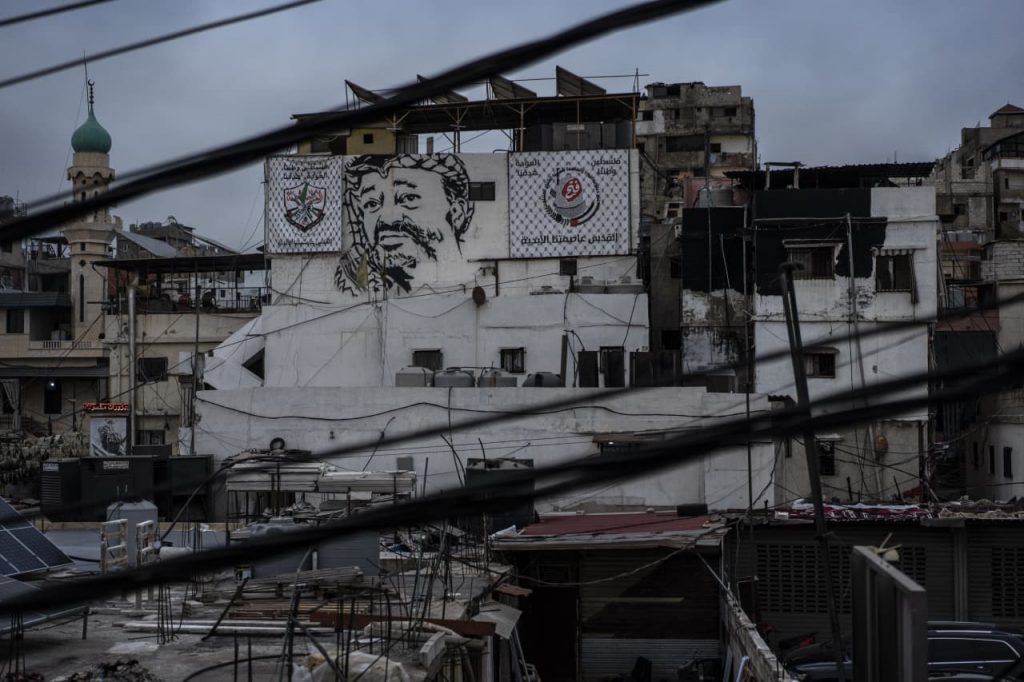
A portrait of former Palestinian leader Yasser Arafat, flanked by two Fatah flags, in a Palestinian refugee camp in Beirut. | Photograph by Manu Brabo for WSJ
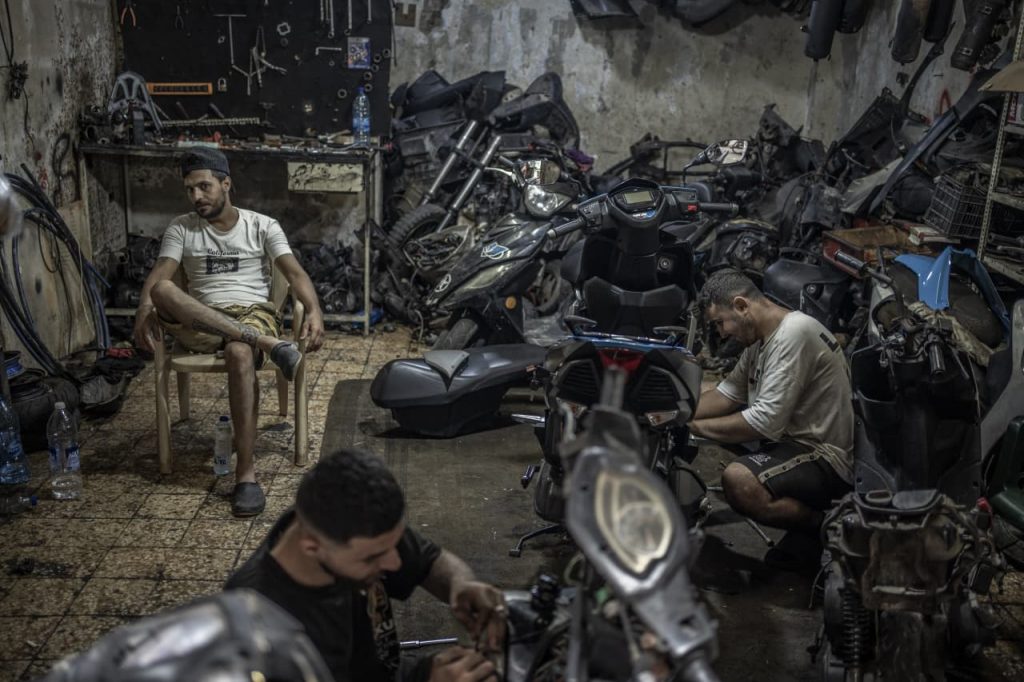
Three Palestinian refugees at their scooter workshop in the refugee camp in Beirut.
| Photograph by Manu Brabo for WSJ
“Our job is to give you a good time, to fuel your energy,” said Charbel Sabbagh, the owner of Odin nightclub in Kfardebian. “This area is so far from what’s happening around us, but that doesn’t mean we don’t care.”
Moustafa, the farmer who fled Beit Lif, didn’t have to travel to Beirut to find a different reality. In Tyre, 15 miles from his village, he was surprised to see life going on as if nothing was happening on the border. His cousins Youssef and Hassan also moved to Tyre early in the war and found a cheap apartment in town for $300 a month. Months later, when it became clear the conflict would drag on, the landlord tripled the rent.
Unable to pay and loath to go to a shelter, the two cousins returned to Beit Lif. Earlier in August, a drone struck close to the home of Hassan, who worked as an ambulance mechanic, and killed them both, Moustafa said.
In another shelter for displaced people in Tyre, Moustafa Ibrahim Saeed, a muscular 54-year-old farmer who fled Beit Lif 10 days after the cross-border shelling started, was bouncing one of his 11 children, from two wives, on his lap. His house had been badly damaged, and the land where he grew seasonal vegetables such as olives, tomatoes and cucumber was ruined, because it hadn’t been farmed.
Saeed said he feared a repeat of the 2006 war between Israel and Hezbollah, in which his brother was killed and his own house destroyed.
“No one wants war,” he said. “But Israel will never allow peace.”
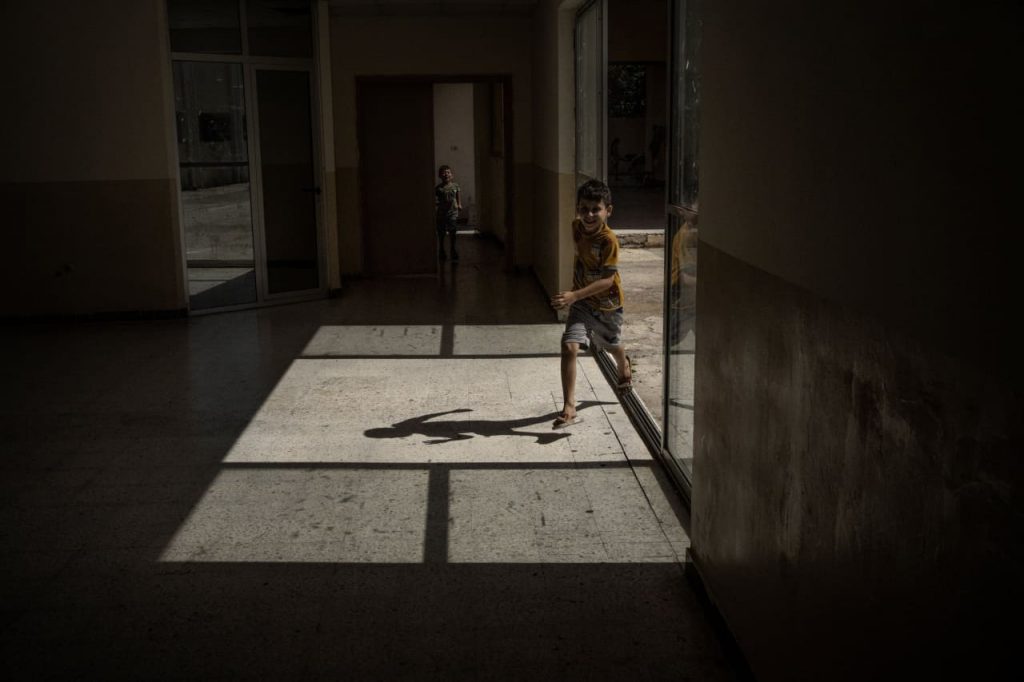
Lebanese children playing in a school in Tyre, where several hundred Lebanese displaced by border clashes have been temporarily housed. Photograph by Manu Brabo for WSJ
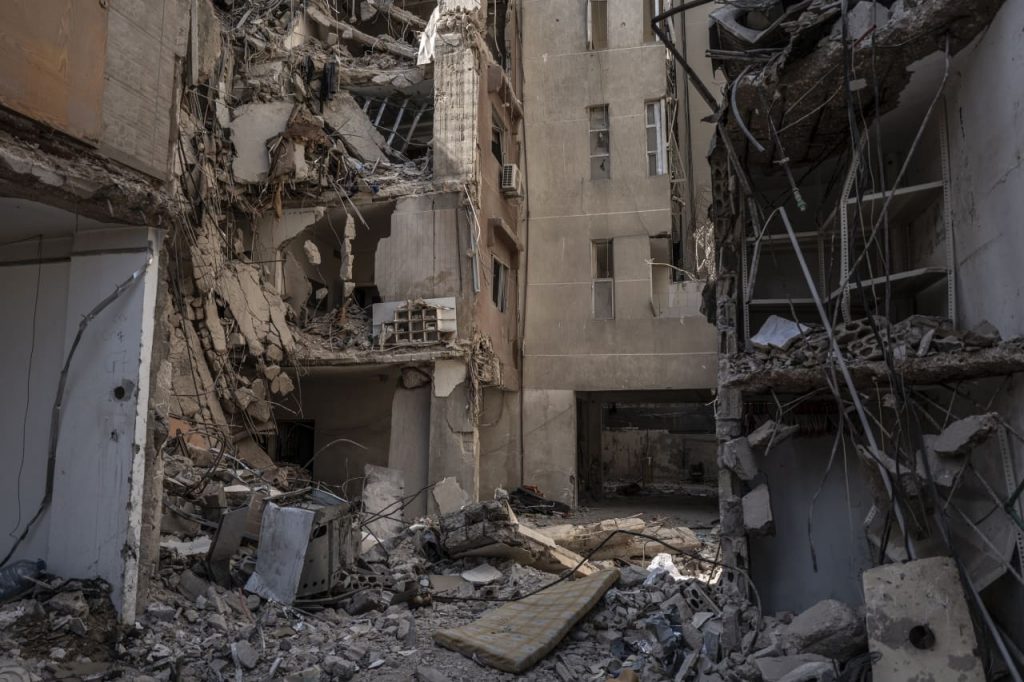
The building where a senior Hezbollah commander, Fuad Shukr, was killed in an Israeli airstrike in Beirut. Photograph by Manu Brabo for WSJ.
The violence is gradually encroaching on Beirut. Twice, suspected Israeli airstrikes have hit the southern suburbs of the Lebanese capital, killing a senior Hamas operative and a senior Hezbollah commander , as well as civilians. Low-flying Israeli jet fighters routinely break the sound barrier over the city, rattling residents with their sonic booms.
“There’s a lot of denial,” said 29-year-old Patricia Ferzly, who had slipped out of Beirut to spend a few days at the Kfardebian fair. “Every day is stressful. We deal with it step by step.”
Write to Sune Engel Rasmussen at sune.rasmussen@wsj.com
Corrections & Amplifications undefined A map in an earlier version of this article included a misplaced label for Jordan. (Corrected on Aug. 27)
